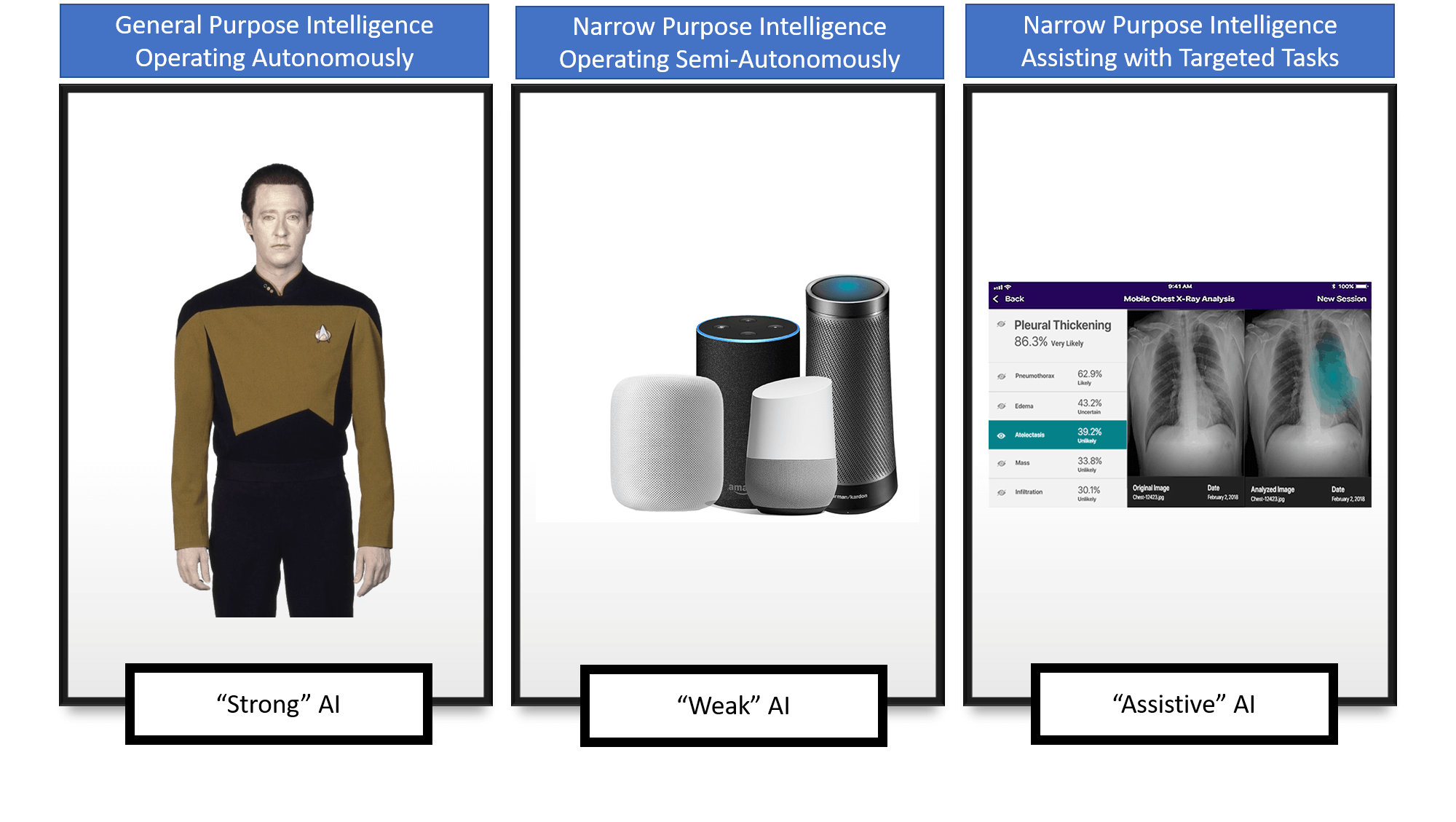AI and the Role of Application Services
These are not the droids you’re looking for.
What do you think of when someone asks you to describe what artificial intelligence is?
Chances are, the vision that will immediately leap to mind will have a very human face—that of Arnold Schwarzenegger (Terminator), Haley Joel Osment (A.I.) or Brent Spiner (Star Trek). The most common visual people associate with the similar term “machine learning” usually doesn’t come with a face, but it may bring to mind the glowing red light of HAL 9000 of 2001, or the perpetually cold robotic logic of Ex Machina. We largely have Hollywood and science fiction to thank for our popular understanding of this complex topic.
And, yet, these flights of fancy are in fact correct manifestations of scientific thinking about what makes the human brain work. Put simply, one can define artificial intelligence as “teaching a computer how to mimic aspects of human intelligence.”

The focus of that intelligence—particularly its purpose and operational mode—helps us define three distinct types of AI. To understand how AI and application services will work together in the future, it’s first necessary to examine each type of AI.
Strong AI
The things we see on the movie screen—big, bad cyborgs or friendly, pale androids—are examples of an autonomous, general-purpose intelligence. It has no specific purpose to its intelligence other than to learn and turn learning into additional autonomous action. These are “strong” models of artificial intelligence, and this type of AI belongs strictly to the realm of science fiction. They do not exist.
Weak AI
Past the “strong” AI is a simpler, more focused version that can be described as a “weak” model of artificial intelligence: it operates autonomously like our movie android would but is narrow of purpose. It’s capable of simple adaptation and learning within the confined realm which it operates. These systems are experts in things that are designed into them but don’t have any capacity to learn new tricks on their own. We interact with them every day by name: Siri, Alexa, Google. We ask them to roll up the windows on our cars, or to stay somewhat distant from the car in front of us. And although we can ask them questions about the weather that they can probably answer, they’re unlikely to give us sage advice about our relationships like Lieutenant Commander Data might.
Assistive AI
The third—and most common—type of AI is one that is not always immediately visible. It’s not one that we would call by name, but we interact with systems that contain this technology on a daily basis. These systems are “augmentation” models of artificial intelligence. They exist to assist human intelligence with specialized tasks by helping our thought processes be more efficient and informed. They’re nearly always ultra-specialized: analyzing dark spots on our X-rays and letting technicians know that they could be significant or quickly comparing products coming off assembly lines to spot quality issues well before a human brain could react to them.
Assistive AI and Application Services
Assistive AI is the basis for the third phase of digital transformation: "AI-Assisted Business." This AI will harness the telemetry collected from the next generation of application services and augment business by providing the means to solve business challenges rooted in technology. This may be as simple as identifying performance issues that lead to reduced customer conversion rates or as advanced as recognizing legitimate customers struggling with a digitized business process. Both require significant data sets that span the data path. Both types of relationships can only be quickly discovered with the power of advanced analysis backed by AI.
To enable such future capabilities, we have embarked on a digital transformation journey of our own focused on expanding application services across the entire code to customer data path. This vision has resulted in the acquisition of NGINX and, more recently, that of Shape Security. Both companies offer unique solutions and application services that are foundational to the future of application delivery and the ability to build an Assistive AI that will help power the digital business of the future.
